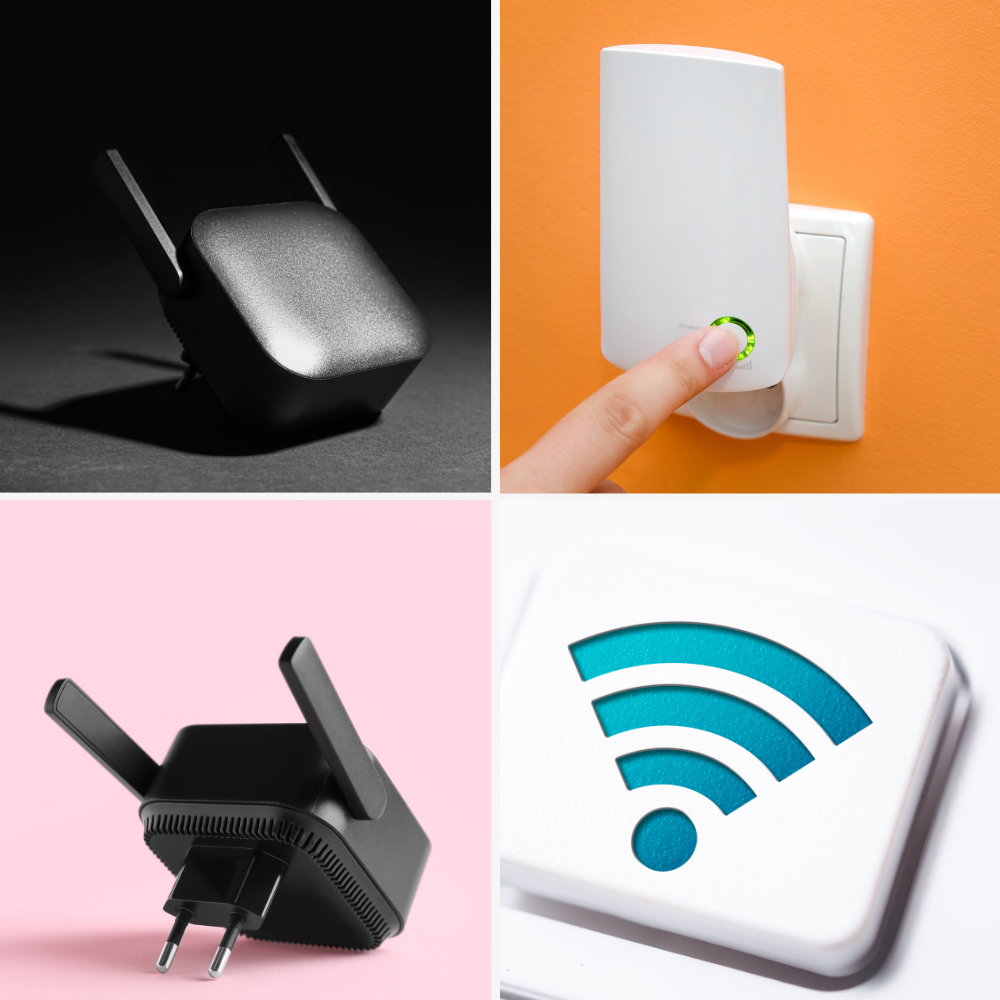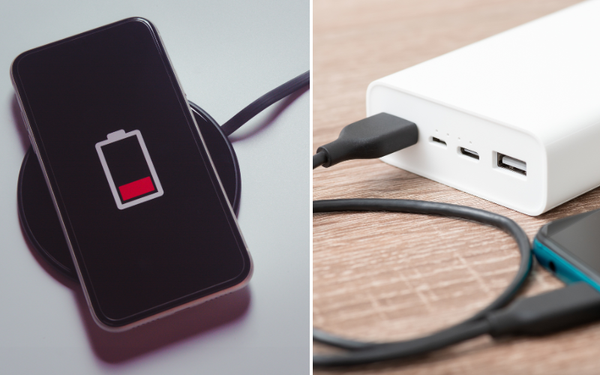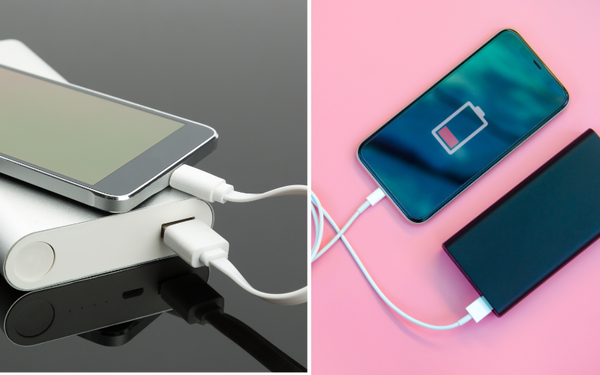Stable, far-reaching Wi-Fi connectivity in the great outdoors isn’t just a wish anymore. Weatherproof, capable, and compatible - these are the cornerstones of the best wifi extenders for outdoors that we have meticulously ranked for you. Understand what makes an extender worthy of your outdoor setup and which models rise above the rest, right here.
Key Takeaways
- Outdoor Wi-Fi extenders need weatherproof casings, should be compatible with your router, cover the desired range, and be easy to install.
- Top outdoor Wi-Fi extenders vary in features and prices and can cater to different needs such as budget constraints, large area coverage, mesh networking, and portability for camping.
- Proper installation and regular firmware updates, along with considerations for safety against environmental elements, are crucial for the optimal performance and longevity of outdoor Wi-Fi extenders.
Essential Features for Outdoor Wi-Fi Extenders

Shopping for an outdoor Wi-Fi extender requires careful consideration of several key features that significantly impacts your outdoor Wi-Fi experience. First and foremost, the extender should be housed in a weatherproof casing to protect it from rain, snow, dirt, and other environmental factors. After all, it’s going to be outdoors, right?
You should also pay attention to the square footage range of the extender. Your extender should offer a range appropriate for your needs, with some models capable of extending the network up to 2,000 feet. Furthermore, make sure the extender is compatible with your current router to ensure efficient network performance and speed.
Finally, an extender with a straightforward installation process is also desirable. Some extenders feature easy access to ports and simplified mounting options, making the installation a breeze.
Top 5 Outdoor Wi-Fi Extenders
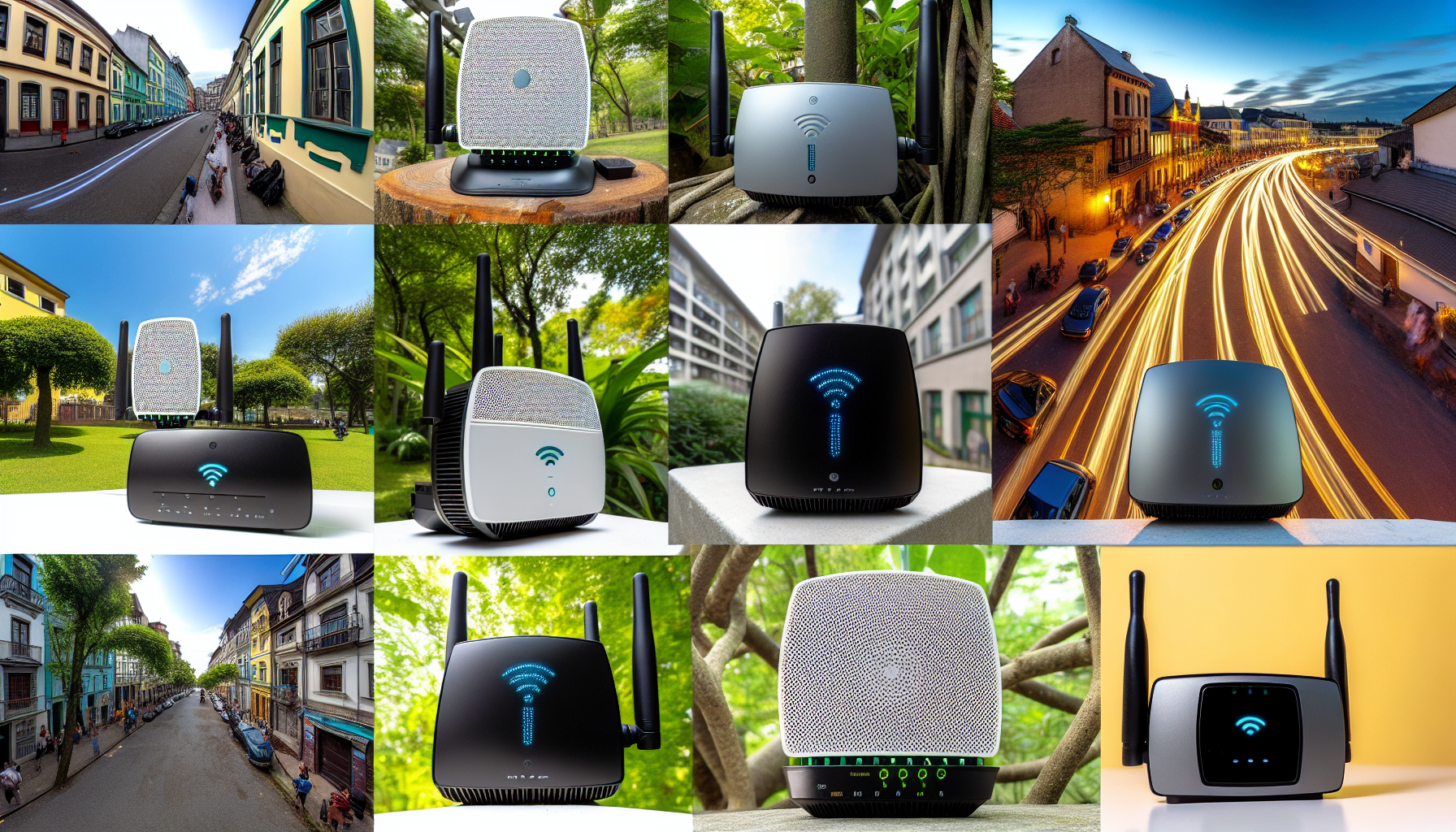
The market is flooded with a plethora of outdoor Wi-Fi extenders, each boasting the latest wireless technology to enhance speeds and performance efficiency. However, finding the one that best suits your needs might pose a challenge. We have handpicked the top five outdoor Wi-Fi extenders that stand out in terms of features, performance, and user reviews. We’ll cover the following options:
- Best overall
- Best budget option
- Best for large areas
- Best mesh system
- Best for camping and RVs
Whether you’re tech-savvy or a beginner, these extenders cater to all levels of expertise and offer an array of features to meet various needs and budgets. From the high-performing TP-Link EAP610-Outdoor to the budget-friendly TP-Link Deco X20, there’s something for everyone. Let’s explore each of these top picks in more detail.
Best Overall: TP-Link AX3000 Mesh Wi-Fi 6 Extender
If you’re looking for an extender that ticks all the boxes, the TP-Link AX3000 Mesh Wi-Fi 6 Extender (RE715X) is your best bet. Recognized as the best overall, this extender boasts dual-band Wi-Fi 6 capabilities, ensuring high network efficiency and speed. Its straightforward installation and universal compatibility with Wi-Fi 6 routers make it a user-friendly choice for all levels of expertise.
A distinguishing feature of this extender is its OneMesh support. This allows it to:
- Create a seamless mesh network when paired with a compatible TP-Link router
- Provide expansive coverage
- Ensure a strong and stable Wi-Fi connection no matter where you are in your outdoor space.
Best Budget Option: REMO Electronics Outdoor WiFi Antenna Extender
On a budget? The REMO Electronics Outdoor WiFi Antenna Extender (BAS-2307) offers a bang for your buck. This extender has won the hearts of users for its satisfactory performance and build quality, all at a cost-effective price point under $40. So you can enhance your outdoor Wi-Fi experience without breaking the bank.
However, bear in mind that this model requires a wi fi router with removable external antennas for connection. This may not be common among modern routers, especially those provided by ISPs. But if your router fits the bill, this extender can be a game-changer for your outdoor Wi-Fi coverage.
Best for Large Areas: TP-Link CPE210
Got a large outdoor space to cover? The TP-Link CPE210 is designed for long-range wireless transmission, offering up to 300Mbps on a 2.4GHz band, making it ideal for covering large outdoor areas. Whether you’re hosting a large outdoor event or need coverage for a spacious backyard, this extender has got you covered.
Equipped with a built-in high-gain antenna and a dedicated metal reflector, this extender enhances signal strength and extends wireless coverage. Moreover, tri-band Wi-Fi extenders, like the Netgear Orbi Outdoor, have shown effectiveness in extending Wi-Fi signals over 200 feet, enabling the use of Wi-Fi-enabled devices during outdoor events. With such an extender, you can enjoy a seamless Wi-Fi experience no matter how large your outdoor space is.
Best Mesh System: Asus ZenWiFi AX (XT8)
If you’re looking for a mesh Wi-Fi system that delivers seamless coverage, advanced security, and easy network management, the Asus ZenWiFi AX (XT8) is a top choice. A mesh network is composed of at least one router and one or more access points to form a unified Wi-Fi network with the same name and password, optimizing coverage.
With AiMesh technology support, the system allows for network expansion by adding other Asus routers and maintains internet speed through a dedicated backhaul. Each unit of the mesh system includes three gigabit Ethernet ports, a 2.5 gigabit WAN port, and a USB 3.1 port for various wired connection needs and network expansions.
What’s more, AiProtection Pro provides advanced security, offering anti-malware protection and parental controls without an additional subscription cost.
Best for Camping and RVs: Netgear Orbi Outdoor Satellite (RBS50Y)
For the adventurous, the Netgear Orbi Outdoor Satellite (RBS50Y) serves as an excellent outdoor Wi-Fi extender. Its features include:
- Rugged design, ideal for outdoor environments
- Can withstand exposure to elements commonly encountered while camping
- Provides reliable Wi-Fi coverage in the woods or at a campsite
So whether you’re in the woods or at a campsite, this extender has got you covered.
Setup is streamlined and user-friendly, allowing campers and RV enthusiasts to easily establish a reliable Wi-Fi connection. What’s more, the product supports various power sources including batteries and solar charging, offering flexible connectivity options for mobile lifestyles. And let’s not forget its energy efficiency feature, ensuring minimal power consumption which is crucial for camping and RV use where power sources may be limited.
Installation Tips for Outdoor Wi-Fi Extenders
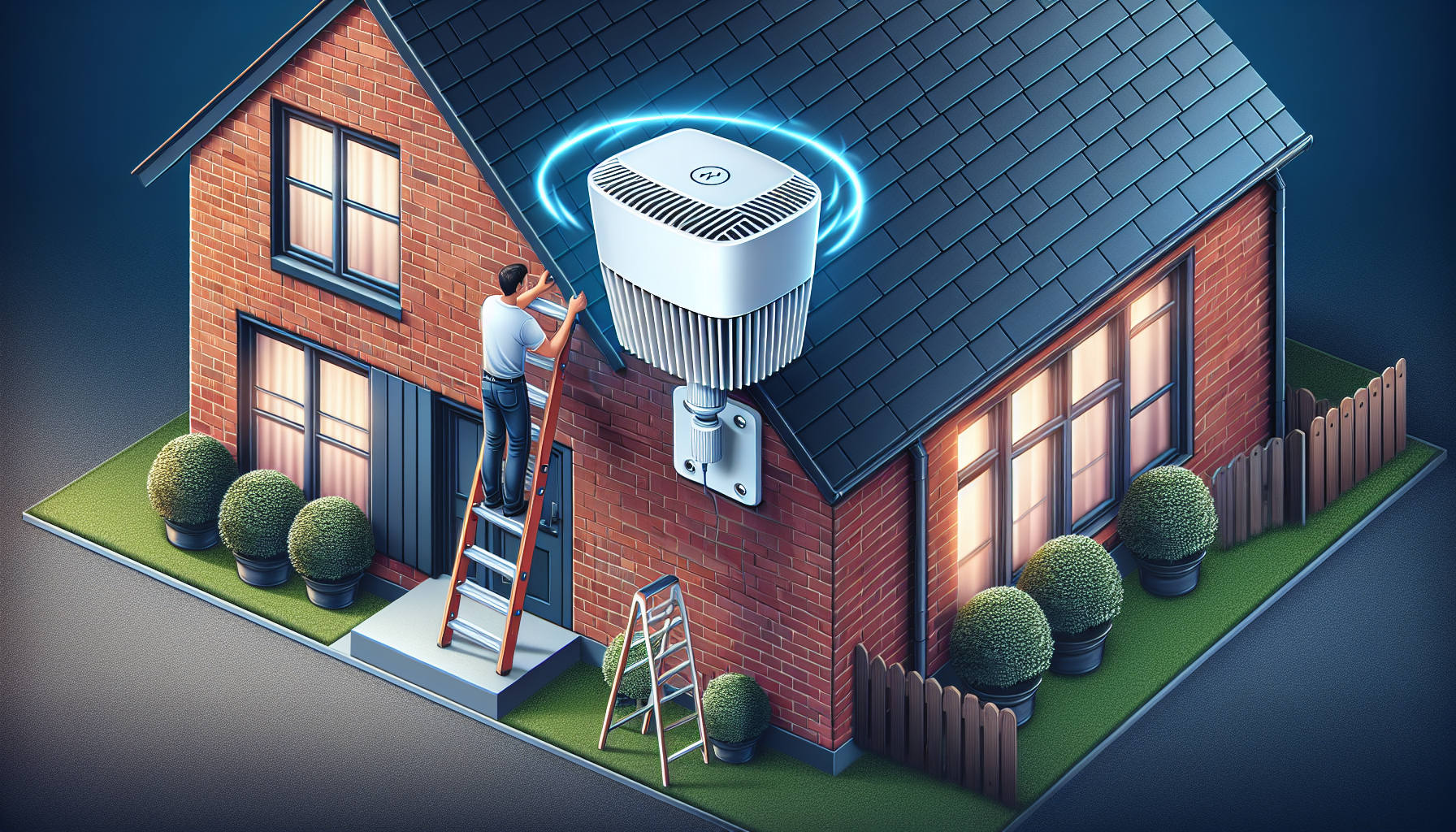
After acquiring your outdoor Wi-Fi extender, proper installation is the next step to ensure optimal performance. Here are some installation tips:
- Place the extender in a central location within the area needing coverage.
- Ensure there is as little obstruction as possible by avoiding positioning near walls, glass, or metal.
- This will allow your extender to broadcast the Wi-Fi signal more effectively.
Don’t forget to:
- Utilize the included mounting kit to install the extender securely on varied surfaces
- Protect all cable entry points and connections from water damage to ensure longevity
- Leverage Passive PoE for a simplified power supply setup
- If extending Wi-Fi between buildings, use cable connections where possible or a wireless bridge ensuring clear sightlines.
Finally, for a smoother internet experience, configure the outdoor Wi-Fi extender to operate on the 5 GHz band to minimize interference and higher performance, particularly when connecting between buildings. Following these tips will ensure that your extender is properly installed and ready to provide a robust Wi-Fi signal in your outdoor space.
Maximizing Your Outdoor Wi-Fi Coverage
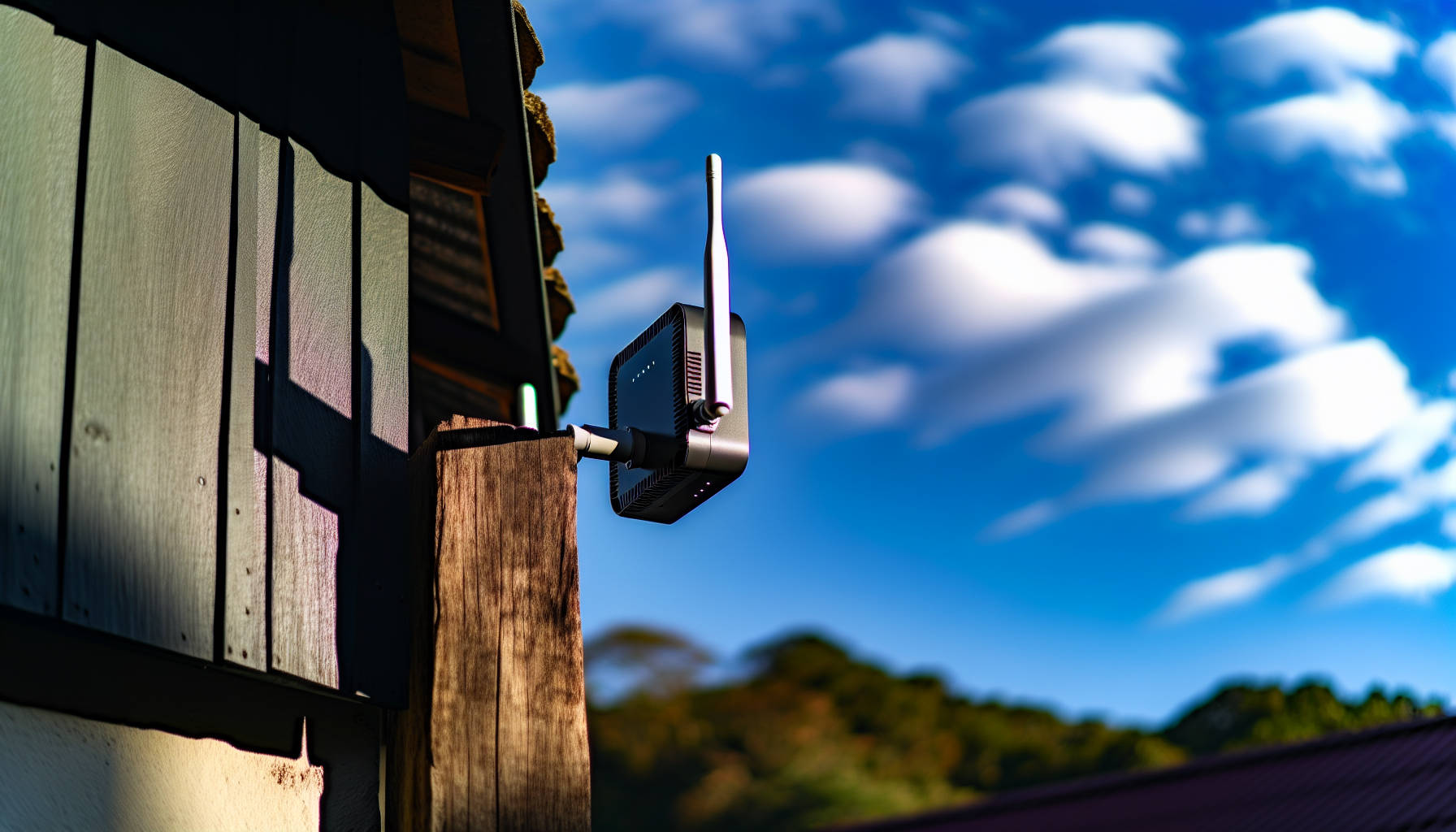
Achieving optimal Wi-Fi coverage can still be challenging, even with the best outdoor Wi-Fi extender. But don’t worry, we’ve got some tips to help you maximize your outdoor Wi-Fi coverage. Start by positioning the Wi-Fi extender off the ground and away from walls and metal objects to reduce interference and improve signal strength.
For more targeted coverage, consider the following tips:
- Use a high-gain antenna to replace the extender’s omnidirectional antenna. This can direct the wireless signal to the areas where it’s most needed.
- Diminish Wi-Fi signal interference from other devices by utilizing electronics that function on different frequencies, such as 5.8 GHz or 900 MHz.
- Change the router’s wireless channel to prevent interference from neighbors’ networks and enhance Wi-Fi signal clarity.
And don’t forget to regularly update your Wi-Fi extender’s firmware. This can fix issues and possibly improve performance, ensuring that your Wi-Fi signal remains strong and reliable. By following these tips, you can enjoy a seamless internet connection in your outdoor space.
Comparing Outdoor Wi-Fi Extenders to Other Connectivity Solutions
Though outdoor Wi-Fi extenders are an excellent way to boost your Wi-Fi signal, they aren’t the only solution available. Other connectivity solutions such as mesh Wi-Fi systems, powerline adapters, and repeaters can also be used to extend your Wi-Fi coverage outdoors.
Mesh Wi-Fi systems, for instance, maintain a single network name, allowing for a seamless transition for devices, and intelligently route devices to the strongest signal node, offering better performance and scalability over Wi-Fi extenders. On the other hand, a wireless access point, such as an outdoor access point, connects directly to a wired network to create a new Wi-Fi network or extend an existing one, offering greater control over network configurations, and are suitable for high-density areas or where a strong signal is crucial.
Repeaters and powerline adapters are also viable options for connecting multiple devices to a wireless network. While using repeaters can result in multiple networks that interfere with each other, they amplify an existing Wi-Fi signal and can be simpler but less reliable for outdoor coverage.
Powerline adapters, on the other hand, are an inexpensive option that supports Gigabit speeds and offers a temporary solution for extending Wi-Fi coverage outdoors with some limitations. By understanding the differences between these options and the use of an ethernet cable, you can choose the one that best fits your needs.
Troubleshooting Common Outdoor Wi-Fi Extender Issues
Even with due diligence, you might still face some issues with your outdoor Wi-Fi extender. But don’t panic; most of these issues can be resolved with some simple troubleshooting steps. If you’re experiencing signal dropouts, for example, the problem might lie in the power source of the Wi-Fi extender. Resolving this may involve resetting fuses and verifying the power outlet’s functionality.
Interference from various devices, such as baby monitors and cordless phones, can also disrupt the Wi-Fi signal. Mitigating this can be as simple as turning those devices off. If the issue persists, consider removing or repositioning physical obstructions, like concrete walls, that can severely affect signal strength. And remember, it’s normal to expect slower speeds when connected to an extender as opposed to the main router.
If connectivity problems persist, restarting all devices involved in the Wi-Fi network, such as the extender, router, and modem, can provide a simple yet effective fix. By following these troubleshooting steps, you can maintain a stable and reliable internet connection in your outdoor space.
Use Cases for Outdoor Wi-Fi Extenders
Outdoor Wi-Fi extenders not only boost your Wi-Fi signal but also unlock a myriad of possibilities for outdoor activities. Here are some examples:
- Enhancing backyard entertainment by enabling Wi-Fi connections for activities such as watching sports events on a projector or TV
- Allowing guests at gatherings to post to social media
- Facilitating outdoor work or study sessions
- Providing Wi-Fi coverage for outdoor security cameras
- Enabling smart home devices to function properly in outdoor areas
These are just a few examples of how outdoor Wi-Fi extenders can enhance your experience in harsh outdoor environments.
For those working from home, outdoor Wi-Fi extenders can facilitate the creation of effective outdoor workspaces, offering stable internet for video conferencing and online tools. This allows for a seamless transition of work from indoors to the open air without compromising speed or reliability. Additionally, these extenders are crucial for operating outdoor smart devices, such as security cameras, lighting, and garage door openers, enhancing user control and security through dependable connectivity.
Moreover, Wi-Fi extenders are designed with versatility to accommodate various outdoor scenarios, such as improving range for patios and decks or extending coverage to outdoor structures like sheds or garages, ensuring consistent wifi signal delivery for multiple use cases.
As you can see, the use cases for outdoor Wi-Fi extenders are vast and varied, making them an essential addition to any modern home.
Safety Precautions for Outdoor Wi-Fi Extenders
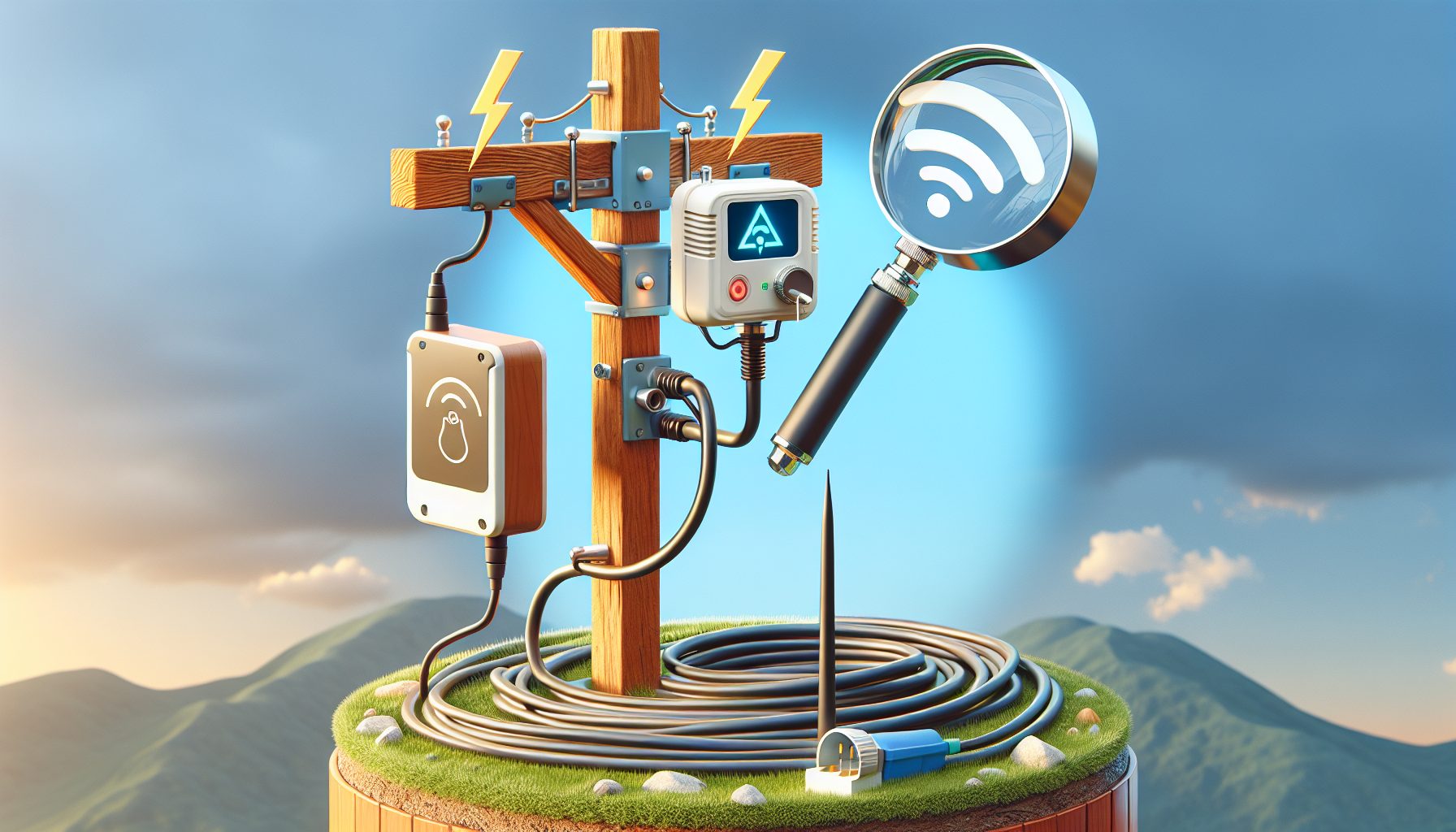
As much as outdoor Wi-Fi extenders offer numerous conveniences, they also necessitate several safety precautions. Proper grounding of outdoor Wi-Fi extenders is crucial to prevent damage from environmental elements, such as lightning strikes. For certain outdoor Wi-Fi models, a supplied ground wire for the metal casing can provide adequate grounding for all connected antennas.
Furthermore, antennas should be grounded to their support structures to safeguard against static electricity, and installing lightning rods according to local codes can protect structures from direct strikes. Using a surge arrestor between the antenna and the RF connector, and constructing a comprehensive grounding system in accordance with building codes, further fortifies against lightning-induced energy. Mitigating surges from the LAN can be achieved by using shielded CAT 5 Ethernet cables connected to PoE with surge protection.
Installation locations must be chosen to minimize the risk of water pooling or flooding, detrimental to the extender’s functionality and safety. Regularly inspecting extenders for water damage or compromised seals, and performing necessary maintenance, maintains their protective qualities. By following these safety precautions, you can ensure that your outdoor Wi-Fi extender serves you safely and effectively for a long time.
Summary
In conclusion, outdoor Wi-Fi extenders are a game-changer in enhancing your outdoor Wi-Fi experience. From enhancing backyard entertainment to creating outdoor workspaces and operating outdoor smart devices, these devices are versatile and practical. By understanding the essential features to look for, the top choices on the market, and installation and safety precautions, you can rest assured that you’re making an informed decision.
Whether you’re a tech-savvy user or a beginner, there’s an outdoor Wi-Fi extender out there for you. So why wait? Boost your outdoor Wi-Fi experience today and embrace the freedom of seamless connectivity in the great outdoors!
Frequently Asked Questions
Can a WiFi extender be used outdoors?
Yes, a WiFi extender can be used outdoors to expand your network coverage beyond the walls of your home, providing a smoother WiFi experience even in harsh outdoor environments. So go ahead and enjoy uninterrupted internet access while soaking up the sun or hosting a barbecue with friends and family.
How do I extend my WiFi from home to outbuilding?
You can extend your WiFi to your outbuilding by running an ethernet cable from your router to the outbuilding and setting up an Access Point there, ensuring a reliable and high-speed connection.
What are the essential features to look for in an outdoor Wi-Fi extender?
Look for a weatherproof casing, square-footage range suitable for your needs, compatibility with your current router, and easy installation when choosing an outdoor Wi-Fi extender. These are the essential features to consider.
How do I troubleshoot common outdoor Wi-Fi extender issues?
To troubleshoot common outdoor Wi-Fi extender issues, check the power source, reduce interference, remove obstructions, and restart all devices in the network for a fresh start. Good luck with your troubleshooting!
What are some use cases for outdoor Wi-Fi extenders?
Outdoor Wi-Fi extenders can improve backyard entertainment, create outdoor workspaces, operate smart devices, and improve connectivity for patios, decks, and outdoor structures. They can make a big difference in your outdoor experience!
You Might Also Like...
